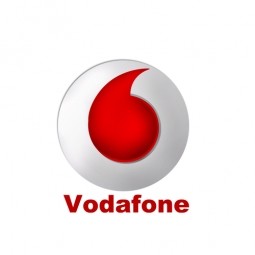
技术
- 网络与连接 - 蜂窝
- 平台即服务 (PaaS) - 数据管理平台
适用行业
- 金融与保险
适用功能
- 物流运输
用例
- 车载远程信息处理
客户
Infomobility.it 集团
关于客户
Infomobility.it Group 位于意大利泰拉莫省,为其运输和保险客户提供远程信息处理解决方案。集团从提供遥感设备开始,其产品组合现在还包括地理信息和卫星
挑战
远程信息处理解决方案提供了这一重要的保费调整信息。该解决方案还有助于检测和阻止车辆或拖车盗窃——一旦发生盗窃,监控人员可以向有关当局发出警报,提供准确的位置。 “随着越来越多的保险公司和主要车队运营商以道路安全、高效物流和成本为由对监控驾驶员行为感兴趣,此类设备和相关电子商务服务的市场在意大利和其他国家迅速增长。欧洲,”佛朗哥说。 “保险公司对按使用付费和按驾驶付费的应用程序特别感兴趣,而其他组织则采用该技术为道路使用者收费。” “目前意大利有 100 万辆汽车携带此类设备,据预测,到 2014 年欧洲市场将增长 10 倍。然而,为了使我们的技术有效发挥作用,我们需要一个高度可靠的无线数据网络来在车辆和监测站之间传输信息。”
解决方案
Infomobility.it 向包括沃达丰在内的三家公司提出了要求。正式招标指定了三个关键标准:高网络可靠性和覆盖范围、服务质量 (QoS) 和具有成本效益的数据流量网络收费。该集团之所以选择沃达丰,是因为它能够满足所有三个标准。在提议的解决方案的测试阶段,沃达丰为 Infomobility.it 的工程部门提供技术支持,并帮助其员工配置合适的 SIM 卡以实现具有成本效益的 M2M 通信解决方案。 “我们提供的 QoS 的一个重要方面是我们的盒子传输的数据的更新频率。因此,我们需要一个好的计费解决方案和专有的加密协议来降低数据交换成本,”Infomobility.it Group 首席技术官 Gianluigi Brasili 说。借助 Vodafone M2M 通信解决方案,Infomobility.it 迄今已为意大利保险公司提供了大约 7,500 个 InfoBox。测试表明网络覆盖非常好。 “绝大多数车辆都报告了出色的覆盖范围,考虑到意大利某些地区的地形,这尤其令人鼓舞,”佛朗哥说。
数量效益

Case Study missing?
Start adding your own!
Register with your work email and create a new case study profile for your business.
相关案例.

Case Study
Safety First with Folksam
The competitiveness of the car insurance market is driving UBI growth as a means for insurance companies to differentiate their customer propositions as well as improving operational efficiency. An insurance model - usage-based insurance ("UBI") - offers possibilities for insurers to do more efficient market segmentation and accurate risk assessment and pricing. Insurers require an IoT solution for the purpose of data collection and performance analysis

Case Study
Smooth Transition to Energy Savings
The building was equipped with four end-of-life Trane water cooled chillers, located in the basement. Johnson Controls installed four York water cooled centrifugal chillers with unit mounted variable speed drives and a total installed cooling capacity of 6,8 MW. Each chiller has a capacity of 1,6 MW (variable to 1.9MW depending upon condenser water temperatures). Johnson Controls needed to design the equipment in such way that it would fit the dimensional constraints of the existing plant area and plant access route but also the specific performance requirements of the client. Morgan Stanley required the chiller plant to match the building load profile, turn down to match the low load requirement when needed and provide an improvement in the Energy Efficiency Ratio across the entire operating range. Other requirements were a reduction in the chiller noise level to improve the working environment in the plant room and a wide operating envelope coupled with intelligent controls to allow possible variation in both flow rate and temperature. The latter was needed to leverage increased capacity from a reduced number of machines during the different installation phases and allow future enhancement to a variable primary flow system.

Case Study
Automated Pallet Labeling Solution for SPR Packaging
SPR Packaging, an American supplier of packaging solutions, was in search of an automated pallet labeling solution that could meet their immediate and future needs. They aimed to equip their lines with automatic printer applicators, but also required a solution that could interface with their accounting software. The challenge was to find a system that could read a 2D code on pallets at the stretch wrapper, track the pallet, and flag any pallets with unread barcodes for inspection. The pallets could be single or double stacked, and the system needed to be able to differentiate between the two. SPR Packaging sought a system integrator with extensive experience in advanced printing and tracking solutions to provide a complete traceability system.

Case Study
Transforming insurance pricing while improving driver safety
The Internet of Things (IoT) is revolutionizing the car insurance industry on a scale not seen since the introduction of the car itself. For decades, premiums have been calculated using proxy-based risk assessment models and historical data. Today, a growing number of innovative companies such as Quebec-based Industrielle Alliance are moving to usage-based insurance (UBI) models, driven by the advancement of telematics technologies and smart tracking devices.

Case Study
MasterCard Improves Customer Experience Through Self-Service Data Prep
Derek Madison, Leader of Business Financial Support at MasterCard, oversees the validation of transactions and cash between two systems, whether they’re MasterCard owned or not. He was charged with identifying new ways to increase efficiency and improve MasterCard processes. At the outset, the 13-person team had to manually reconcile system interfaces using reports that resided on the company’s mainframe. Their first order of business each day was to print 20-30 individual, multi-page reports. Using a ruler to keep their place within each report, they would then hand-key the relevant data, line by line, into Excel for validation. “We’re talking about a task that took 40-80 hours each week,” recalls Madison, “As a growing company with rapidly expanding product offerings, we had to find a better way to prepare this data for analysis.”

Case Study
Detecting and Reducing Cost of Fraud Rings
A leading insurer wanted to reduce its multi-billion dollar expenditures on auto insurance claims, which is its largest annual expense. Currently, the company avoids paying out only about 0.33% of the predicted 10% of fraudulent claims. The insurer uses both manual (60-65%) and automated systems (30-35%) to flag questionable claims. These claims are passed on to the investigative case managers who read adjuster and other member notes, explore the fraud watch list, and search the web. Their existing approach cannot easily discover fraud rings or, more importantly, collusion among other fraud rings. Moreover, the investigative team typically decides in 30 days or less on whether to pay or deny a claim. This is due to heavy caseloads and expectations for a quick turnaround in claim processing in order to keep customers satisfied.



